What is Star Wars about? Every fan of the saga created by George Lucas has her or his own answer to this question. For some, it’s primarily about the epic battles and duels with lightsabers. For others, it’s about their favorite heroes and the story of the eternal struggle between good and evil. And for some, Star Wars is about the amazing planets, many of whose names have long become common knowledge.
But how realistic are the planets from a galaxy far, far away, and can their analogues be found in our Milky Way? Commemorating the “Star Wars Day,” the Universe Space Tech team decided to investigate this question.
Tatooine
Tatooine is undoubtedly the most famous planet from the Star Wars universe. It appeared in most of the films and series in the saga.
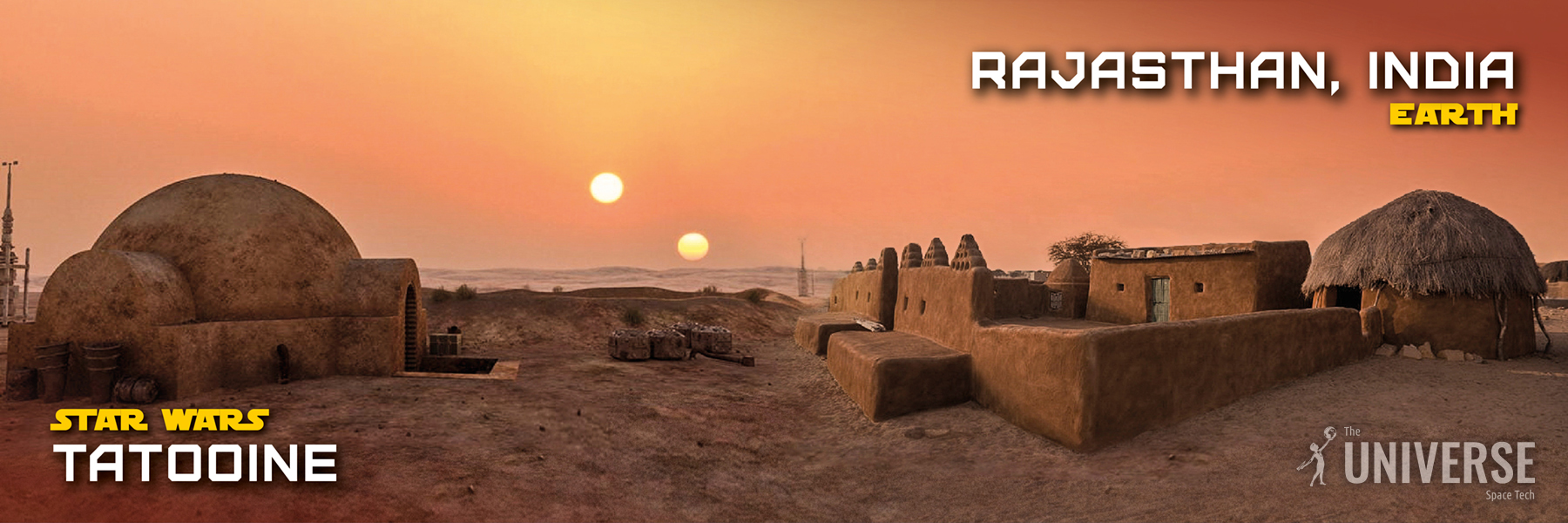
According to canon, Tatooine is a planet that orbits around two stars. In the distant past, its surface was covered with oceans and forests. However, it later dried up, turning into a giant desert.
At the time of the release of the original Star Wars, Tatooine was mostly perceived by the scientific community as a product of a vivid imagination. The matter is that many astronomers doubted the fundamental possibility of the existence of planets in systems with multiple stars. The main argument was that they simply couldn’t form due to gravitational disturbances. And if they did form, they would either die out fairly quickly or be ejected from the system.
This point of view turned out to be incorrect. Most of the exoplanets we know about today do indeed orbit around single stars. But “Tatooines” are not unique either. Currently, astronomers know of several dozen similar worlds — not only in systems with two stars but also with three and even four stars. However, they are all gas giants. The radius of the smallest such a planet found to date (Kepler-47b) is three times that of Earth. But there is no doubt that as technology advances, astronomers will be able to find rocky “Tatooines” as well.
It’s also worth noting that real “Tatooines” don’t necessarily have to look like dried-up deserts. Their climate will be determined by the characteristics of their orbits and their distance from their star. Under the right conditions, such a world could resemble our own Earth.
Hoth
The planet Hoth can be seen in the opening portion of The Empire Strikes Back episode. It is a completely frozen world that serves as a temporary refuge for the rebel forces. Despite the extremely cold climate, it has both a breathable atmosphere and indigenous life.
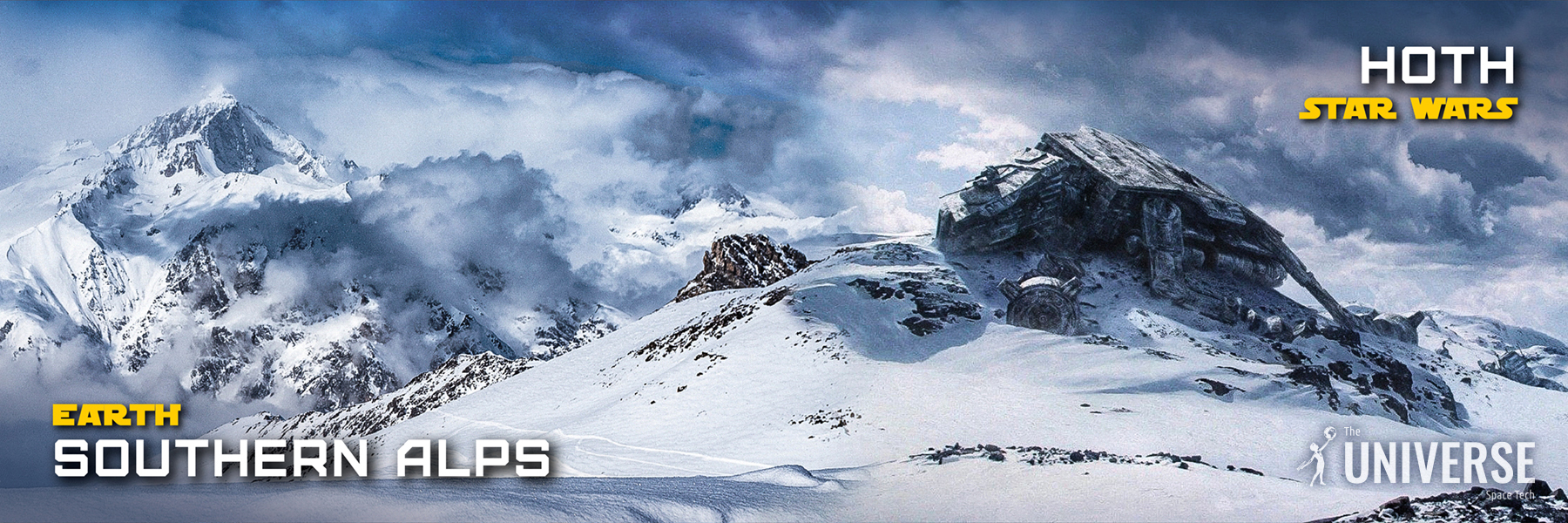
Similar icy worlds are likely common throughout the universe. Even in our own Solar System, there are analogs to such a planet. For example, Europa, a moon of Jupiter, is entirely covered in ice. Another example is Enceladus, which orbits Saturn.
Furthermore, in the distant past, our own Earth was not so different from Hoth. Geological evidence suggests that about 700 million years ago, our planet experienced a global ice age and essentially became a giant snowball. Even at the equator, conditions resembled modern-day Antarctica. Life on Earth was only able to survive thanks to areas of ocean free from ice, far from the continents. If we were to travel back in time to that distant era, we would likely see landscapes very similar to those shown in the film.
Endor
The planet Endor is a satellite of a gas giant, almost completely covered with forests and inhabited by Ewoks — a race of small, furry, bipedal creatures. It was the site of a crucial battle in Return of the Jedi episode that led to the downfall of the Galactic Empire.
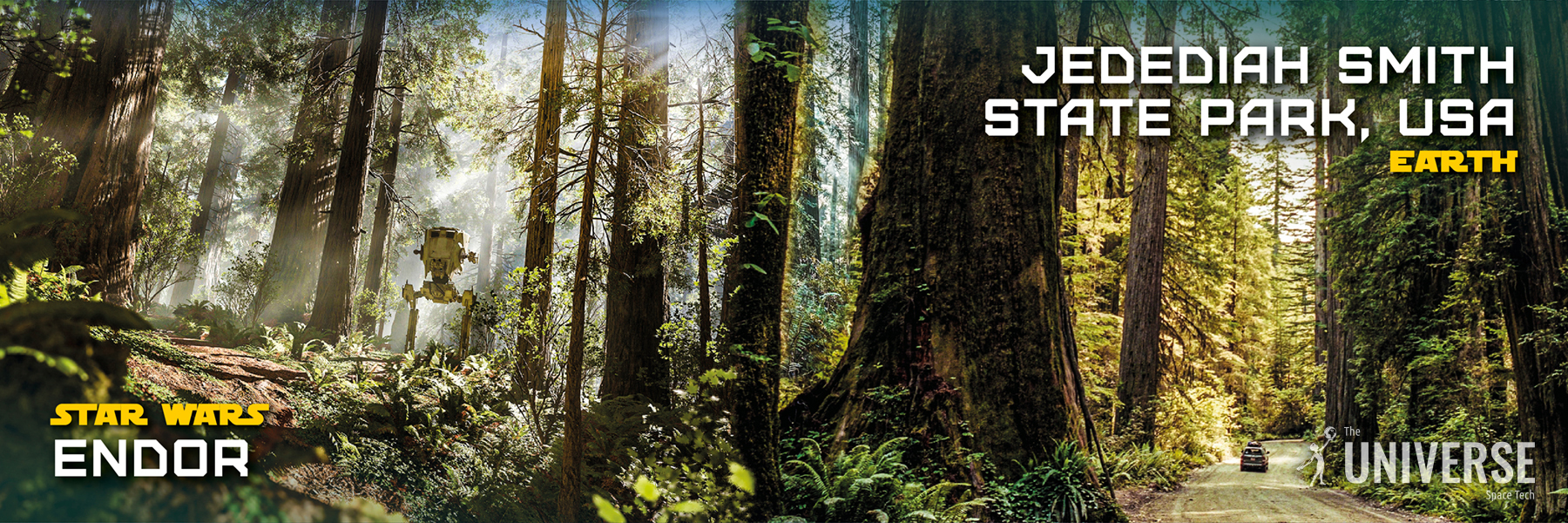
For obvious reasons, we won’t speculate about the likelihood of the existence of Ewoks. But what about Endor itself? Can a satellite of a gas giant be inhabited and resemble our Earth?
Let’s start with the fact that even giant planets in our own solar system do have fairly large satellites. For example, Ganymede is larger than Mercury, and Titan has a full-fledged atmosphere. Astronomers suggest that giant gas planets in other star systems may have even larger moons, comparable in size to or even larger than Earth.
Can such satellites be similar to Earth? It’s quite possible, as long as their “host planet’s” orbit falls within the so-called habitable zone. In this case, their surface will receive enough energy for water to exist in liquid form, which will be a key prerequisite for the formation of life.
Mustafar
Mustafar is also a moon of a gas giant like Endor, but in every other way, these worlds are complete opposites. While Endor is a lush world, Mustafar is almost entirely covered in lava. It was the location of the duel between Obi-Wan Kenobi and Anakin Skywalker shown in Revenge of the Sith. After his transformation into Darth Vader, Anakin chose Mustafar as the site of his castle.
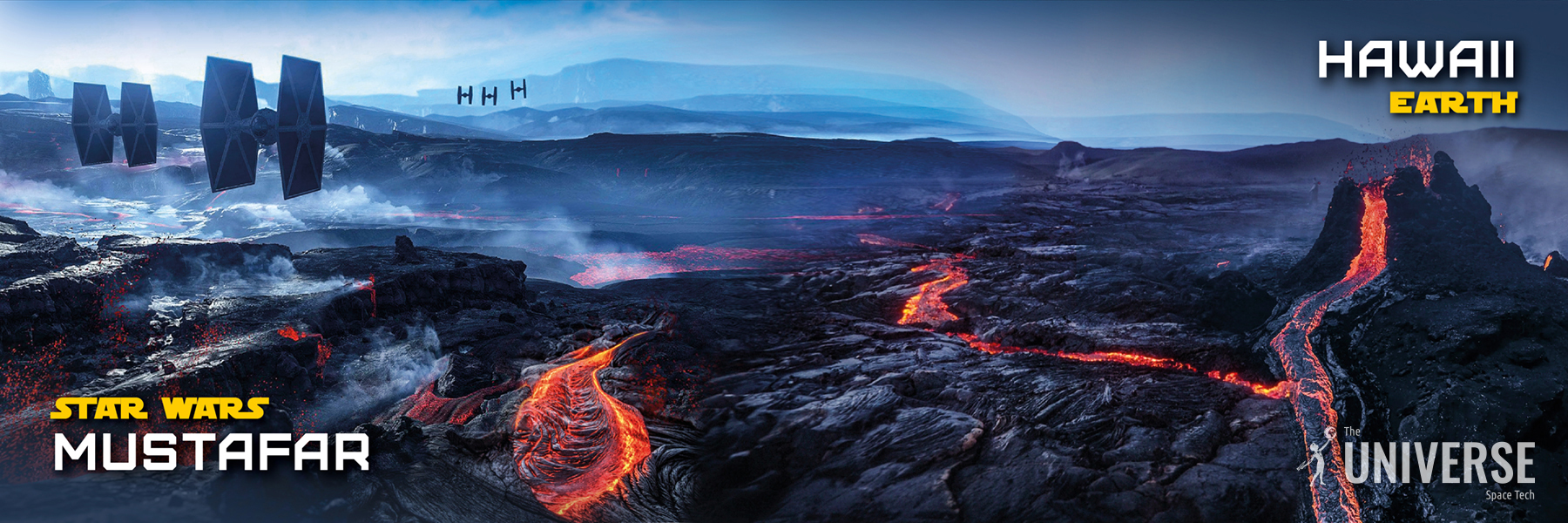
As we’ve already mentioned, under certain conditions, moons of gas giants can have conditions that are entirely comfortable for life. However, the key word here is “certain.” Under other orbital configurations, the gravity of the gas giant can indeed turn its companion into a volcanic world.
A good example is Io, which could well play the role of Mustafar. This Jovian moon is famous for its violent volcanic activity. There are hundreds of volcanoes on its surface. Their constant eruptions have created a truly apocalyptic landscape. For kilometers, flows of sulfur and silicate magma stretch across Io’s surface, pouring into real lava lakes. The moon’s surface is entirely composed of layers of volcanic deposits, and beneath it lies an ocean of magma.
The source of all this activity is the tidal heating of Io’s interior by Jupiter’s gravity. Because of this, eruptions on its surface never stop for a moment. It is not doubtful that such a mechanism is not unique and not limited only to the solar system. Therefore, in our Milky Way, one can find countless analogues of Mustafar.
Kamino
The planet Kamino appeared on the screen in the second episode of the Star Wars saga. It was its inhabitants who created the infamous army of clones. The planet itself is known for having no solid surface and being completely covered in water.
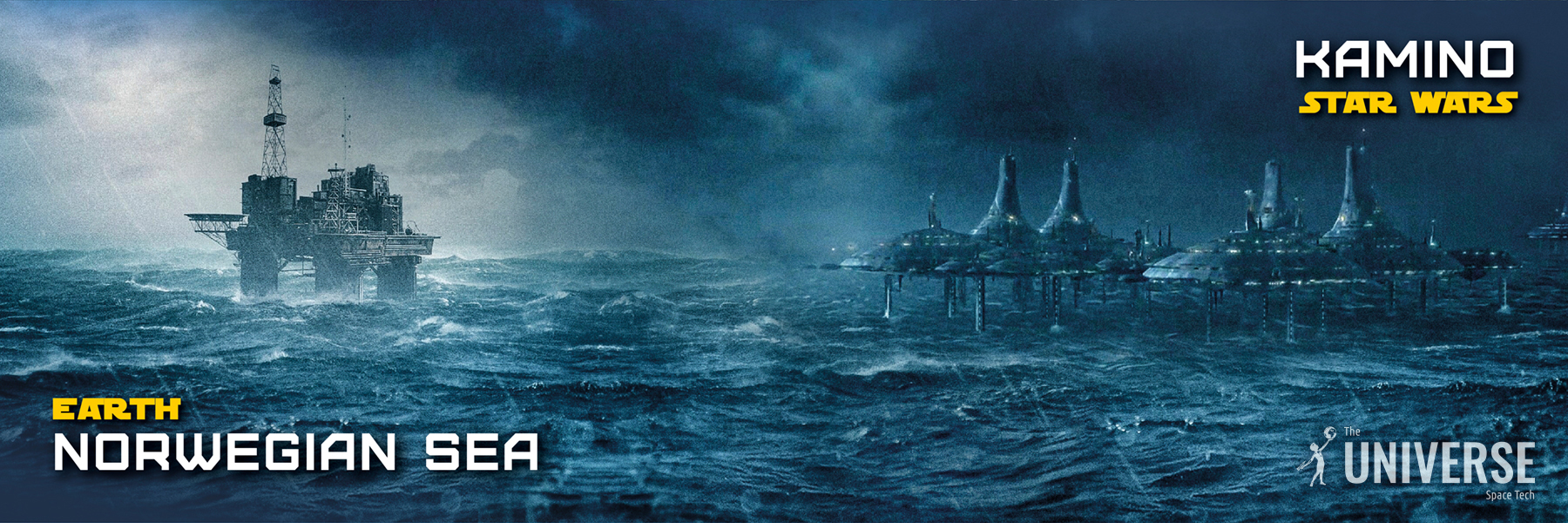
Most astronomers believe that such watery worlds are quite common in the universe. This confidence is supported by a whole series of exoplanets already discovered, the ratio of mass and size of which unambiguously indicates the presence of a large amount of water in their composition. As an example, one can cite K2-18 b – an exoplanet located 110 light years away from the Sun, which receives approximately the same amount of energy from its star as our Earth does. It has a powerful atmosphere, in which traces of water vapor have been found, and its average density indicates that the planet is mostly composed of water. If there are any inhabitants on K2-18 b, it is possible that they have never seen a dry land in their lives and are not even familiar with this concept.

